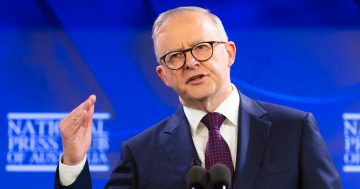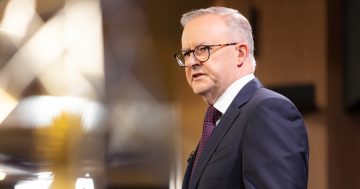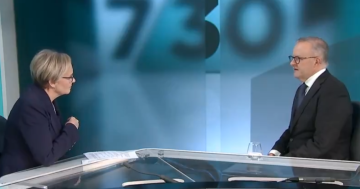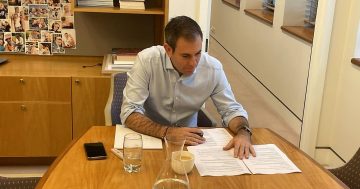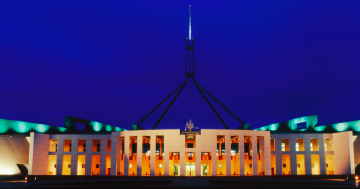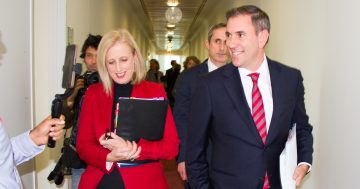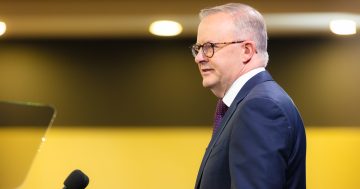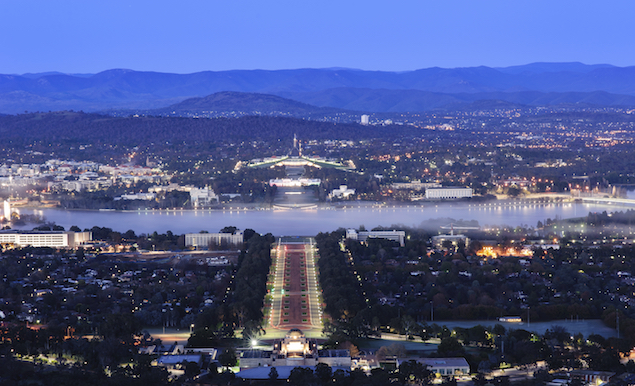
At a glance
– $2 billion cut from departmental budgets over four years
– No jobs growth for public sector
– No new infrastructure money for ACT
Scott Morrison on Tuesday delivered a cautious pre-election budget that offered Canberrans little to get excited about and further pain for the public service.
The ACT public sector will continue to bear a heavy burden as the Coalition seeks to reduce this year’s $37 billion deficit to just $6 billion within four years.
In his budget speech to parliament, the Treasurer declared the Coalition would not relent in its quest to cut costs.
“In this budget we will continue to cut unnecessary waste and keep government spending under control to balance the budget over time,” he said.
An extra $2 billion, the so-called efficiency dividend, is to be removed from departmental budgets across the four-year forward estimates period as the Coalition reneged on a pledge to pull back in its drive to save costs.
The dividend, imposed across the public sector, will remain at 2.5 per cent before dropping to 2 per cent in 2018-19.
Canberra’s national cultural institutions were particularly hard hit by budget measures, with more than 60 staff jobs set to go in 2016-17 after the government revealed in March that national institutions would be forced to deliver nearly $40 million of savings within four years, above earlier federal budget cuts.
The cuts include a loss of 28 positions at the National Library of Australia, 20 at the National Gallery, 12 at the National Film and Sound Archive and three at the National Portrait Gallery. The Australia Council will lose one position.
There was some cheer for the ACT government, however, with confirmation some health and education funding would be restored after it was slashed in the unpopular 2014 budget delivered by Joe Hockey.
One of the few funding commitments for the ACT was $300,000 for the Travel Time Information project, with $250,000 in 2016-17 to enable the project to be completed next financial year.
No other cash was set aside for major projects for the capital. Unusually, there were very few election sweeteners for voters, who will go to the polls in less than nine weeks.
Instead, the safety-first approach was designed to emphasise the Turnbull government’s credentials for sound economic management.
The budget included tax relief for middle-income earners and small business, but Mr Morrison told parliament it was not the time to be “splashing money around” given the fragile state of the global economy.
The treasurer’s modest maiden budget came on the day the Reserve Bank made history by announcing its first ever budget day interest rate cut, to an all-time low of 1.75 per cent.
Key features of Mr Morrison’s economic blueprint were:
- a crackdown on multinational tax avoidance
- a reduction in lucrative superannuation tax breaks for the rich
- a tax cut for small and medium sized-businesses – down one percentage point to 27.5% – as part of a long-term plan to bring the overall company tax rate down to 25 per cent within 10 years.
- a tax cut for workers earning more than $80,000.
Low income earners will receive a superannuation tax offset from next year to ensure those on less than $37,000 do not pay more tax on retirement savings than on their income.
Mr Morrison announced the government would spend $594 million on researching and acquiring land for an inland rail network connecting Brisbane to Melbourne, and linking south-east Queensland with Perth and Adelaide.
The Coalition will enlist the government-owned Australian Rail Track Corporation to build the project but will also seek private investment. The corporation will use the money to buy land for the 1700km freight line and continue pre-construction works, such as environmental assessments.












